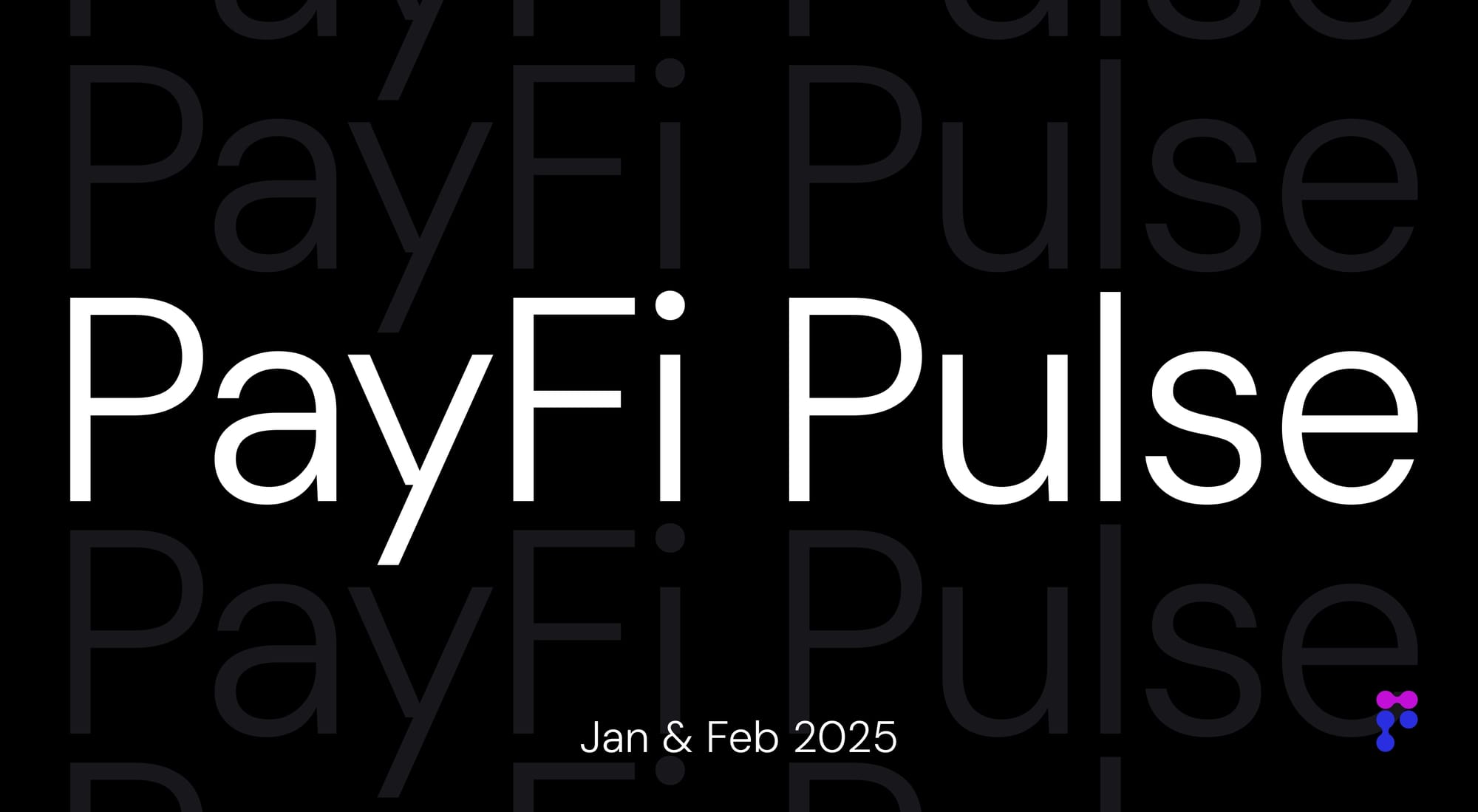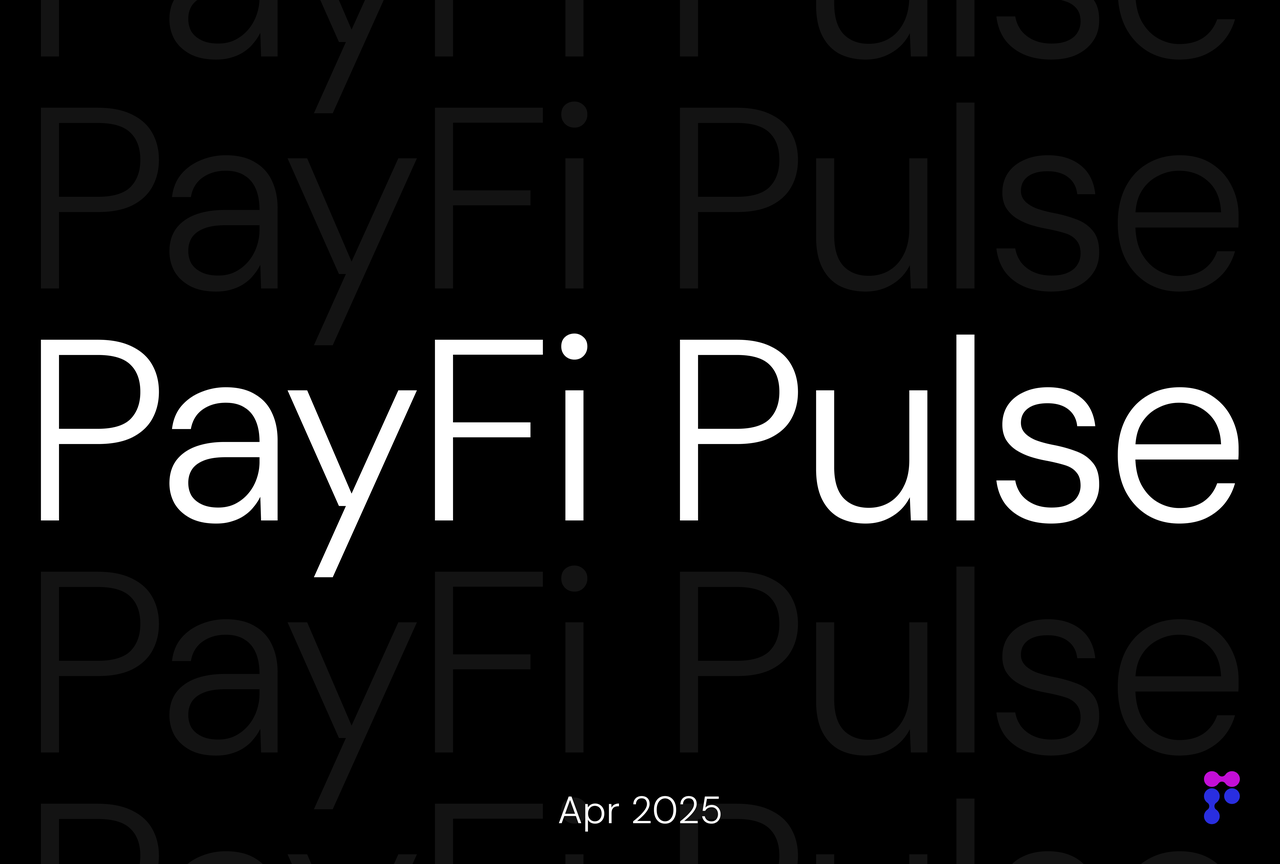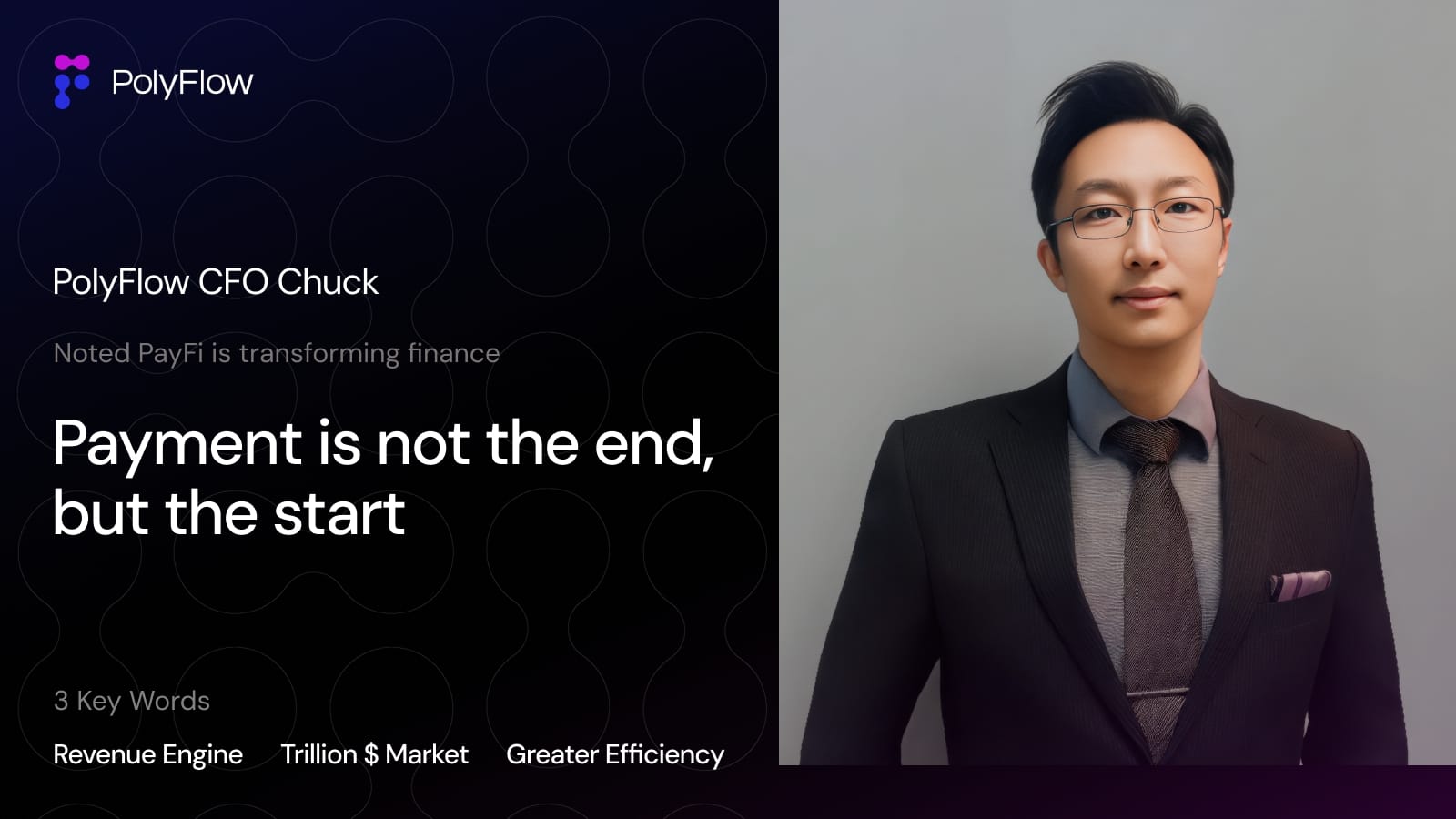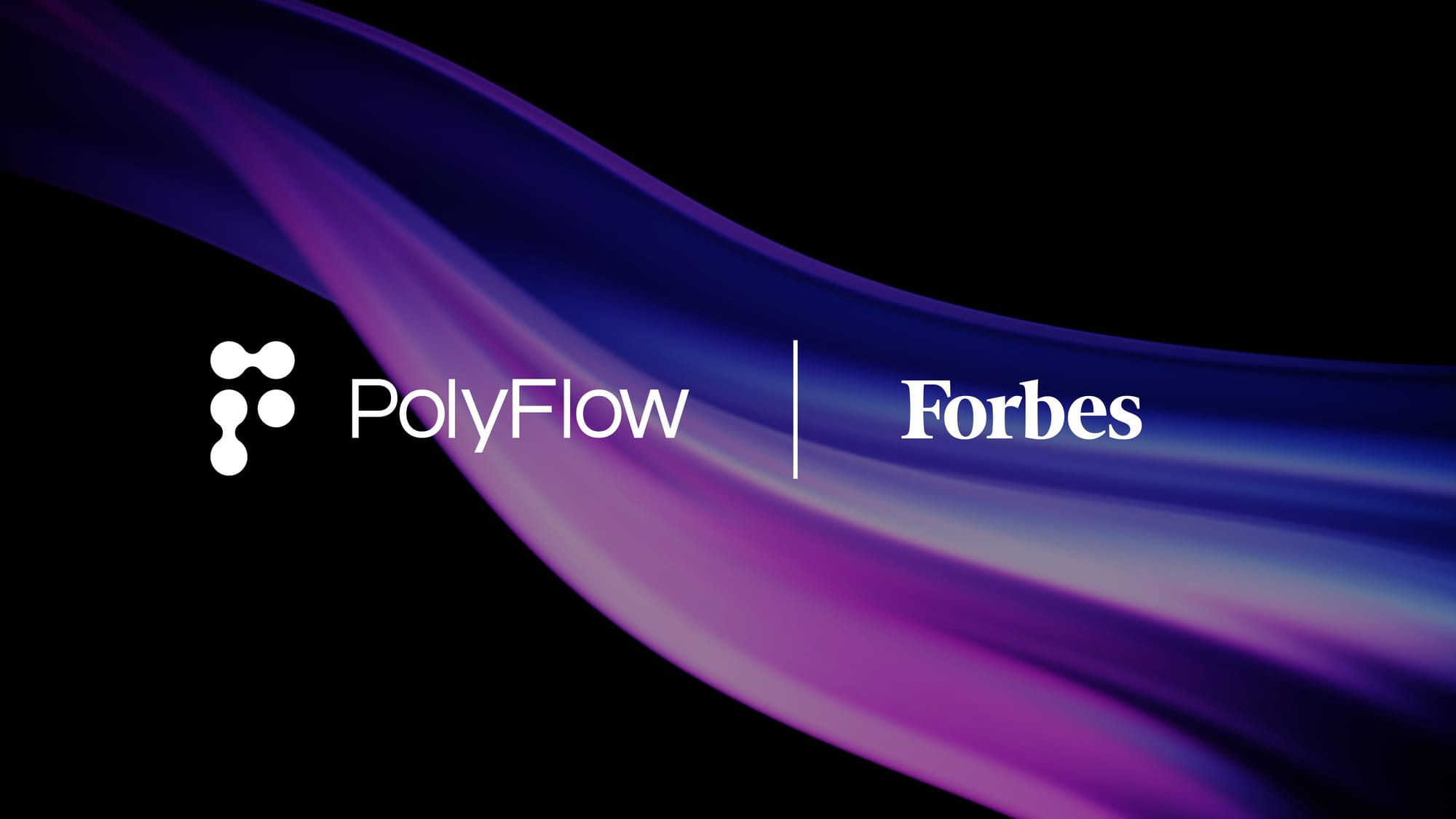The PayFi Report 2025 (Jan & Feb)
By the end of 2024, stablecoins, operating in tandem with traditional financial infrastructure, had seen their total market value exceed $200 billion. Just five years earlier, these digital assets were still in their nascent stages. Since then, they have significantly simplified and accelerated global value transfers, creating a robust blockchain network that streamlines cross-border trade and facilitates remittance payments, thereby becoming an integral component of modern finance. According to

By the end of 2024, stablecoins, operating in tandem with traditional financial infrastructure, had seen their total market value exceed $200 billion. Just five years earlier, these digital assets were still in their nascent stages. Since then, they have significantly simplified and accelerated global value transfers, creating a robust blockchain network that streamlines cross-border trade and facilitates remittance payments, thereby becoming an integral component of modern finance. According to ARK Invest's "Big Idea 2025" report, stablecoins are among the fastest-growing segments in the digital asset space, having surpassed both Mastercard and Visa in terms of transaction value by 2024.
PayFi is further developing and expanding stablecoin payment networks. By leveraging blockchain and smart contract technology, PayFi offers on-chain financial services such as lending, wealth management, and investment on a global scale. By integrating payment and financial services with blockchain as the settlement layer, PayFi harnesses the advantages of stablecoin payments and DeFi to enhance efficiency and enable seamless value transfers.
With this context in mind, let's delve into the PayFi sector in January and February 2025 to uncover what transpired during the first two months of the year and to explore the future trends in the PayFi sector.
Stablecoins Overtook Mastercard And Visa In Transaction Value In 2024
According to ARK Invest's "Big Idea 2025," stablecoins saw an annualized transaction value of $15.6 trillion in 2024—approximately 119% and 200% of Visa's and Mastercard's transaction values, respectively. The number of transactions reached 110 million monthly, accounting for roughly 0.41% and 0.72% of those processed by Visa and Mastercard, respectively. This indicates that the value per transaction for stablecoins is significantly higher than for Visa and Mastercard.
Given that stablecoins serve a wide range of use cases, transactions can be initiated manually by end users or programmatically by bots, resulting in a lot of noise in the data. Consequently, Visa adjusts stablecoin data to exclude inorganic activities, such as those initiated by bots and other artificially inflated behaviors. According to the Visa Onchain Analytics Dashboard, the adjusted annualized stablecoin transaction volume in 2024 was $5.62 trillion. Analyzing data from the first 12 months through February 2025 reveals:
Original Data:
- Annualized stablecoin transaction volume: $32.3 trillion
- Total transactions: 4.9 billion
- Transaction value per transaction: $6,592
- Based on a total stablecoin amount of $200 billion, the capital turnover rate is 161.5.
Adjusted Data (excluding bot operations and high-frequency behaviors):
- Annualized stablecoin transaction volume: $6.1 trillion
- Total transactions: 1.3 billion
- Transaction value per transaction: $4,692
- With a stablecoin total of $200 billion, the capital turnover rate is 30.5.
According to Visa's data, the adjusted stablecoin transaction volume is comparable to Mastercard's annual transaction volume, and each transaction amount is more valuable.For January, Visa Onchain Analytics Dashboard shows:
In February, the overall stablecoin transaction volume experienced a significant decline, dropping by nearly half, due to the sluggish crypto market and other factors. However, after excluding data attributed to high-frequency transactions and bots, the Visa-adjusted stablecoin figures reveal only a slight decrease compared to January. This indicates that, despite the market challenges, transactions driven by real-world use cases remain robust.
Messari PayFi Report
Stablecoins are fundamental to the PayFi sector, and as stablecoins continue to thrive, an increasing number of innovative applications are expected to emerge. Messari's recent report, "PayFi Ecosystem Analysis," provides a comprehensive overview of the entire PayFi ecosystem.
“Payment financing operates on the principle of the time value of money, which posits that a dollar today is worth more than a dollar in the future. This is because money received today can be invested to generate additional value over time. Payment financing is already a cornerstone of the traditional financial system, essential for everyday life and vital to global economic growth.
Existing payment financing markets include credit cards, which had a global transaction market of $16 trillion in 2023, and trade finance, which supports the $89 trillion market of global business-to-business payments. Remittances are another crucial example, with one in seven people worldwide relying on cross-border payments. However, enabling remittances currently requires $4 trillion in pre-funded liquidity for settlements, highlighting the significant inefficiencies of the current system.”
This underscores the substantial demand for PayFi solutions. Beyond improving existing systems, PayFi creates entirely new markets, enabling financial use cases that were previously impossible. This allows developers to design innovative financial solutions that streamline value exchange and reduce settlement latency.
The PayFi ecosystem provides the technological infrastructure to build financial primitives that address long-standing inefficiencies in traditional payment financing systems. By enabling both new and existing use cases, PayFi expands financial accessibility and drives global economic growth.
Cryptorails: Superconductors for Payments
Dmitriy Berenzon from Archetype discusses how cryptocurrency payment channels could reshape global financial infrastructure. By 2025, these channels are anticipated to form a parallel financial system with annual transactions exceeding $15.6 trillion, outpacing Visa and Mastercard. Stablecoins, as key mediums, offer real-time settlement and low-cost transactions, reducing cross-border fees from 6.4% to 1%-3%. Companies like Stripe are rapidly entering this space. Key benefits include T+0 fund receipt for merchants, 80% improved cross-border remittance efficiency, and addressing B2B payment delays. Freelancers in emerging markets use stablecoins against currency devaluation. Challenges include global compliance needing over 100 licenses, high costs, and credit card rebate systems hampering user transition. In five years, B2B payments will likely dominate, with 80% of merchants supporting crypto. Visa and Mastercard plan global expansion, social platforms like Telegram are integrating payments, and new dedicated payment blockchains will emerge alongside widespread enterprise-driven privacy tech. Cryptocurrency channels, offering disintermediation and real-time settlement, could set the new global financial standard within a decade.
Ondo Finance Brings Tokenized Real-World Assets to Mastercard’s Multi-Token Network
Ondo Finance is collaborating with Mastercard to integrate tokenized real-world assets into Mastercard's Multi-Token Network (MTN), bridging traditional finance with blockchain technology. This partnership allows Mastercard to utilize its vast payments infrastructure to securely and scalably handle transactions involving tokenized assets, enhancing the usability of digital assets by enabling seamless transactions across a multi-token environment. The initiative aims to provide institutional investors and enterprises with advanced tools for digital finance engagement, while ensuring regulatory compliance. Ondo Finance's expertise in asset tokenization aligns with Mastercard's goal of developing an interoperable network supporting various digital currencies and tokens. By incorporating blockchain into mainstream finance, the collaboration seeks to drive innovation and efficiency, offering new prospects for liquidity and investment diversification. This venture highlights a trend of established financial institutions entering the crypto space, leveraging blockchain's potential to revolutionize financial services, and aims to create a more integrated ecosystem where digital and traditional assets coexist smoothly.
Investments in PayFi
Circle has entered the tokenization race by acquiring Hashnote, a real-world asset issuer valued at $1.3 billion, as reported by CoinDesk. This strategic acquisition marks Circle's commitment to expanding its influence in the tokenization sector, leveraging Hashnote's capabilities to enhance its offerings in digital asset management. By integrating Hashnote's expertise, Circle aims to capitalize on the growing demand for tokenized assets, providing innovative solutions that bridge traditional finance with the digital asset space. This move reflects Circle's ongoing efforts to lead in the evolving financial technology landscape and deliver cutting-edge services to its clientele.
1Money has successfully completed a fundraising round, securing over $20 million in seed funding to support its growth and expansion strategies. This round attracted diverse investors, including top venture capital firms and strategic partners interested in fintech innovation. Launched by Brian Shroder, the former CEO of Binance.US, 1Money is a Layer-1 stablecoin payments network focused on developing a protocol exclusively for stablecoin payments, offering instant transactions, fixed costs, and support for multiple stablecoins. The funds will be used to enhance 1Money's financial technology offerings, scale operations, enter new markets, and improve customer experience. Aligned with its strategic goals, this investment positions 1Money as a leading player in the fintech industry by offering innovative solutions that meet evolving customer needs. Shroder envisions stablecoins as foundational to a modernized global financial system, bridging the gap between Web3 technology and mainstream users. The successful fundraise indicates strong investor confidence in 1Money's business model and growth potential, accelerating its growth trajectory and supporting its mission to provide cutting-edge financial solutions.
Cedar Money, a payments company, has raised a $9.9 million seed round led by QED Investors, with participation from North Island Ventures, Wischoff Ventures, Lattice, and Stellar. This investment aims to enable Cedar Money to facilitate faster, more reliable, and cost-effective cross-border stablecoin payments between developed and emerging markets, addressing challenges in the traditional correspondent banking network. By leveraging this funding, Cedar Money plans to enhance its platform's capabilities and broaden its market reach. With stablecoins becoming increasingly crucial in the fintech landscape, Cedar Money is positioning itself strategically to meet the evolving needs of its users and capitalize on the growing demand for stablecoin-based financial solutions.
Phantom has successfully raised $109 million in a Series C funding round led by Paradigm, with participation from other prominent investors such as Andreessen Horowitz and Variant Fund. This latest funding round will enable Phantom to enhance its cryptocurrency wallet offerings, focusing on expanding its technical team and launching new features to improve user experience and security. The investment reflects strong confidence in Phantom's potential to drive innovation in the digital asset management space and meet the growing demand for secure and user-friendly crypto wallets. With this capital infusion, Phantom aims to solidify its position as a leader in the industry, offering cutting-edge solutions that cater to both new and experienced users in the evolving digital finance landscape.
MoonPay has acquired the crypto payment processor Helio for $175 million, marking a pivotal step in enhancing its infrastructure and expanding its service offerings in the digital payment ecosystem. The Helio platform, which has handled over $1.5 billion in transactions, integrates with leading digital platforms such as Discord, WooCommerce, and Shopify through the widely used Solana Pay plugin. This acquisition highlights MoonPay's commitment to integrating advanced technology to provide efficient and seamless cryptocurrency payment solutions, thereby strengthening its position in the fintech industry. Helio's platform simplifies the creation and integration of bespoke on-chain checkout flows via a developer API, enabling marketplaces, apps, trading terminals, and decentralized exchanges (DEXs) to route and accelerate transactions with high success rates. By incorporating Helio's capabilities, MoonPay aims to deliver innovative and reliable payment services that address the growing demand for digital transactions. This strategic move aligns with MoonPay’s vision to lead and innovate in the digital finance sector, catering to the evolving needs of modern consumers.
INXY Payments, an EU-authorized payment platform, has secured a $3 million investment round led by Flashpoint VC, with contributions from angel investors. INXY acts as a payment gateway that smoothly integrates crypto payments into traditional business operations, ensuring regulatory compliance. It simplifies crypto transactions for businesses with features like multi-currency processing, automated payouts, and crypto-to-fiat conversion.
Peter Thiel-Backed Stablecoin Firm Plasma has successfully raised $20 million to develop a Bitcoin-based network specifically designed for stablecoins. This initiative aims to leverage Bitcoin's robust infrastructure to create a secure and scalable platform for stablecoin transactions. The funding will be used to advance the technical development of the network, enhancing its capabilities and expanding its reach within the digital finance ecosystem. Plasma's project represents a significant step in integrating stablecoins with Bitcoin, potentially increasing the utility and adoption of both technologies in the global financial system.
The Trend in January & February
We observe that PayFi is still in its early stages, with most funding currently focused on blockchain-based payment tools and infrastructure. Examples include digital wallets like Phantom and stablecoin payment platforms such as 1Money and Cedar Money. Meanwhile, in the mergers and acquisitions space, significant players in the industry are gradually addressing their on-chain shortcomings and expanding their ecosystems. For instance, Circle's acquisition of Hashnote marks its entry into the tokenized money market and provides liquidity for USYC. Similarly, MoonPay's acquisition of Helio enhances its on-chain payment capabilities.As the PayFi infrastructure continues to mature and improve, we can expect to see a proliferation of new PayFi applications. The future looks promising.
About PolyFlow
PolyFlow is an innovative PayFi protocol designed to connect real-world assets (RWA) with decentralized finance (DeFi). As the infrastructure layer of the PayFi network, PolyFlow integrates traditional payments, crypto payments, and DeFi in a decentralized manner to handle real-world payment scenarios. PolyFlow provides the necessary infrastructure to ensure compliance, security, and seamless integration of real-world assets, paving the way for a new financial paradigm and industry standards.

The PayFi Report 2025 (Apr) by PolyFlow
Despite the continued buzz surrounding PayFi, its foundation relies significantly on the broad adoption of stablecoins. In the April market, we note that with regulatory clarity under the new U.S. framework, many fintech giants are entering the arena. Whether by participating in stablecoin issuance, developing their own stablecoin payment networks, or entering through investments and acquisitions, fintech firms are poised to dominate the future stablecoin market, as to the further application of

Interview with PolyFlow CFO: When Payments Build Onchain Credit — PayFi Reconstructs Financing
In the traditional financial system, “payment” is often regarded as the end state of value transfer. But in the world of PayFi, it marks the beginning of value creation. When Visa can process tens of thousands of transactions per second but still requires several days for cross-border settlement, and when small and medium-sized enterprises shoulder a 6.5% cost on international payments while still having to pre-fund transactions, a financial revolution is quietly fermenting through on-chain paym

PolyFlow Insights: Rethinking Financial Systems Through Blockchain
The article is sourced from the Forbes Finance Council. Original article link: https://www.forbes.com/councils/forbesfinancecouncil/2025/03/28/drawbacks-of-traditional-financial-systems-and-how-blockchain-tech-can-help/ Raymond Qu | Cofounder PolyFlow, aiming to transform the global payment landscape & create efficient, innovative pay solutions | Geoswift. The traditional financial system has long been the backbone of global commerce, enabling economic growth. However, despite its many strengt